|
Location:
Eastern Lombardy, The Alps. |
Grid Reference:
Approx: 46� 00" N, 10� 20" 00' E. |
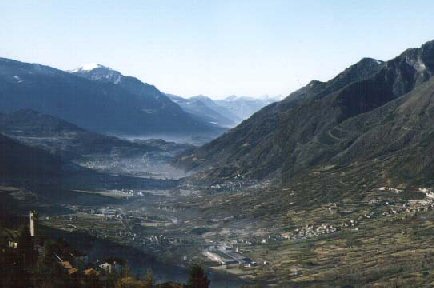
 Val Camonica:
(Rock Art)
Val Camonica:
(Rock Art)
Valle
Camonica derives its name from the Latin Vallis
Camunnorum, that means "the Valley of the
Camunni", the name by which the Romans called the
inhabitants (today are called Camuni). It is one
of the largest valleys of the central
Alps, in eastern
Lombardy, about 90 km long.
The inhabitants,
who had begun to visit the valley already in
the Palaeolithic, settled from the
Neolithic. They were called by
Romans the
Camunni, people of uncertain origin, famous for
their
stone carvings, in Val Camonica they left about 300,000
petroglyphs, which has made the area one of the largest centres of rock
art (Arte Rupestre) in Europe (1)
|
Val
Camonica: 'Valcamonica'. |
Chronology:
-
Palaeolithic-post Palaeolithic
figures.
Typified by large,
naturalistic figures of hunted animals (elk, deer)
such as those seen at Luine.
(No Image
Available)
-
Neolithic: (Or the beginning
of Copper Age, 3500-2800 BC)
Typified by figures
with maps (rectangular or round geometric
topographic figures), spirals and probably no more
at Luine, Paspardo, Vite, Dos Sottolajolo.
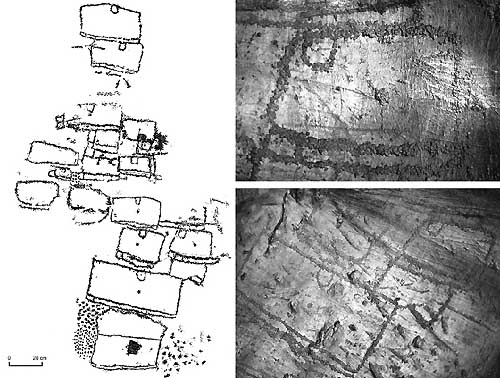 Topographic
compositions, or maps, are constituted by regularly
repeated geometric modules. Topographic
compositions, or maps, are constituted by regularly
repeated geometric modules.
They are the
only figures which are covered by the Copper Age
figures (Borno 1, Bagnolo 1, Ossimo 8). Basing on
the study of the superimpositions, the maps
represent the most ancient phase (apart the
Epi-palaeolithic style) of the Valcamonica rock art
(a similar consideration should be reflected in the
Mt. Bego rock art). Some compositions which have
been interpreted by Anati as idols (Sellero,
Paspardo) and assigned to the Style II, are more
likely to be interpreted as maps.
(2)
Topographic
composition at Vite, Paspardo, late Neolithic -
first Copper Age (photo A. Arc�)
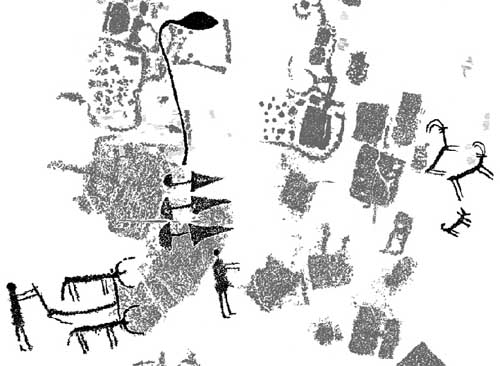
Topographic
composition overlapped by Copper Age (Remedello
2 phase 2800-2400 BC) daggers and ploughing
scenes (tracing A. Fossati - P. Frontini)
(2)
-
Copper Age
figures: (2,800 - 2200 BC)
Typified by
triangular blades (Remedello and "Campaniforme"
culture) daggers, triangular body human figures
(like dancing, male and female, often sexuated),
deers and pigs, ploughing scenes with cows, weapons
(axes), icons of the sun and something like
"carpets", at Borno, Ossimo, Darfo, Foppe di Nadro,
Cemmo, Paspardo..
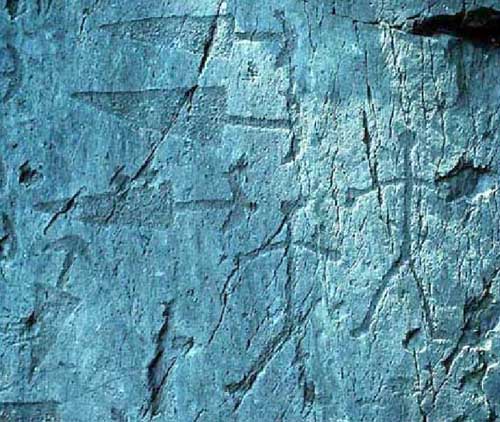
Copper Age daggers and
schematic human figures on the Cemmo 2
boulder (photo A. Arc�)
-
Bronze Age figures (2200-800 BC)
Typified by daggers,
axes, weapon's compositions, orants (people praying)
(male and female, often sexed) with orthogonal arms
and legs, at Luine, Foppe di Nadro, Naquane.
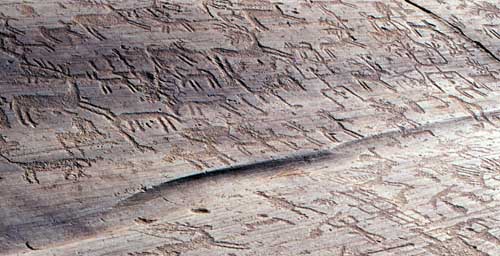
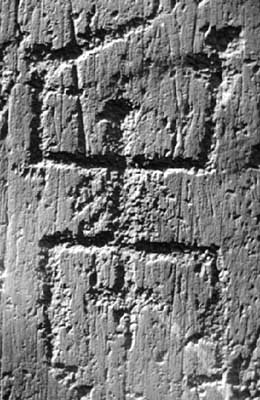
(Left) Naquane Rock 1, (Right) Weaponed and
dressed praying figure on a Vite rock (photo A. Arc�)
-
Iron Age figures (800-16 BC)
The period of time
that produced an explosion in rock art (80% of all
figures), divided in 5 periods, with warriors, duels, riders,
single figures and scenes (like duelling, hunting,
sexual or ploughing scenes), dogs, birds, wood-stone
houses, Etruscan inscriptions, footprints, swords, spears, snakes,
spirals, cup-marks, everywhere. A big concentration
in National Park of Engraved Rock at Naquane (Capo
di Ponte). Always male and never female.
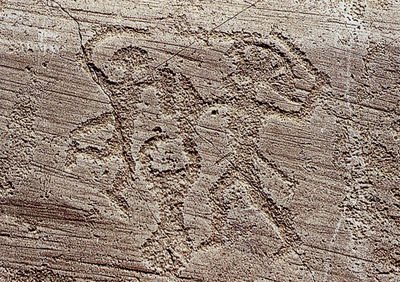
Fighting warriors
or ceremonial images from Valcamonica's more recent
history.
Gallery of Images:
Valcamonica.
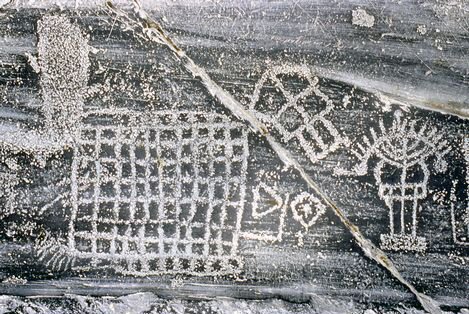
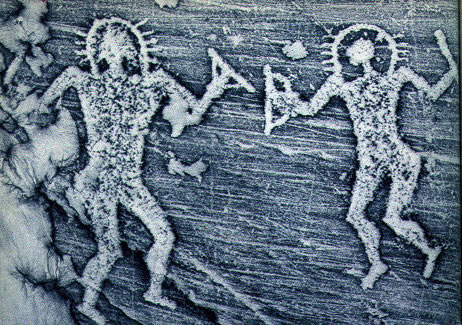
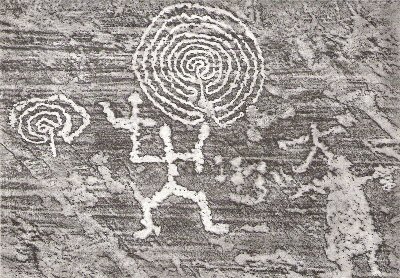
(More
about Labyrinths)
(Cave-art
Homepage)
(Italy
Homepage)
|

 Topographic
compositions, or maps, are constituted by regularly
repeated geometric modules.
Topographic
compositions, or maps, are constituted by regularly
repeated geometric modules.






